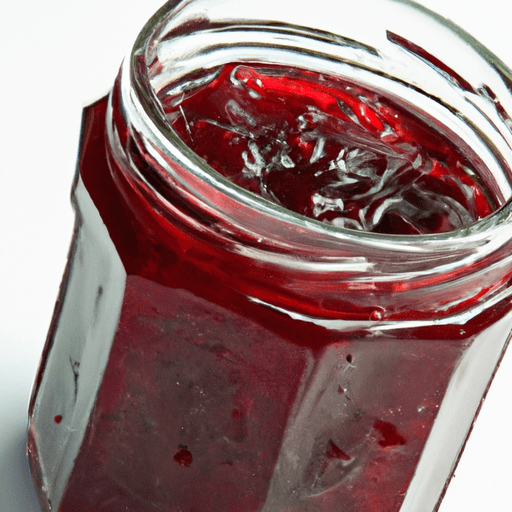The Delicious World of Jam: A Sweet Journey into Flavor
Jam, the epitome of sweetness and flavor, has been a beloved culinary delight for centuries. This delectable spread, made from fruits, sugar, and a touch of magic, offers a burst of taste that can elevate any dish or tantalize your taste buds on its own. From the classic strawberry jam to exotic flavors like fig and ginger, this versatile condiment deserves a place of honor in every pantry.
A Symphony of Flavors
Jam captures the essence of fresh fruits, transforming them into a concentrated burst of mouth-watering goodness. The taste of jam varies depending on the fruit used and the level of sweetness desired. Strawberry jam, for example, is lusciously sweet with a slight tartness, while raspberry jam offers a more intense, tangy flavor. Apricot jam can be both sweet and tangy, making it an absolute delight on a freshly baked cracker or a warm slice of bread.
Beyond Toast: Jam in Cooking
While jam makes a classic and irresistible accompaniment to a slice of toast, its uses in the culinary world don’t stop there. This versatile spread can add a burst of sweetness and complexity to a wide array of dishes.
1. Baked Goods: Incorporating jam into baked goods takes them to a whole new level. Thumbprint cookies, filled with a dollop of raspberry jam, become colorful treats that burst with flavor. Imagine biting into a tender buttery cookie, only to discover a hidden treasure of fruity goodness.
2. Glazes and Sauces: In savory cooking, jam can be transformed into glazes and sauces that add depth to your dishes. Combine apricot jam with mustard for a tangy glaze to brush over roasted chicken, or stir peach jam into barbecue sauce for a mouthwatering sweet and smoky flavor.
3. Cocktails and Beverages: The sweet nature of jam lends itself perfectly to creating delicious and unique cocktails. Muddle a spoonful of blackberry jam into your favorite spirit to create a vibrant fruity concoction. Or, swirl a spoonful of strawberry jam into a glass of lemonade for a refreshing twist.
Nutritional Value
While indulging in the delightful flavors of jam, it’s important to consider its nutritional value. Jam primarily consists of fruits, sugar, and pectin. Fruits contribute to the fiber content of jam, providing essential vitamins and minerals. However, it’s worth noting that the sugar content can vary depending on the recipe. Opting for homemade or naturally sweetened jams can be a healthier choice, as they tend to contain less added sugar.
A Brief History of Jam
The art of preserving fruits by cooking them with sugar can be traced back to ancient times. The word “jam” is thought to have originated from the Portuguese word “marmelada,” which referred to a quince paste. In the 17th century, preserving fruit in sugar became a popular practice in Europe, as it allowed people to enjoy their favorite fruits year-round. Today, jams are treasured in cultures around the world, each with their own unique variations and flavors.
Fun Facts
- Did you know that in the United States, jams primarily contain crushed fruits, while jellies are made from fruit juice?
- The world record for the largest jar of jam weighs a staggering 2,016 kg (4,444 lbs)! That’s a whole lot of sweetness in one jar.
- In the United Kingdom, the art of making jam is celebrated on the 29th of October each year, known as National Jam Day.
Conclusion
Jam has the incredible power to transform ordinary dishes into extraordinary culinary experiences. Its wide range of flavors, versatility in cooking, and rich history make it a true kitchen superstar. So, whether you’re spreading it on warm toast, drizzling it over a scone, or using it as a glaze for a succulent roast, let the world of jam enchant your taste buds and take your cooking to new heights.
Origin:
- The origins of jam can be traced back to ancient times, with evidence of preserved fruits being found in ancient Egypt and the Roman Empire.
- The term “jam” is believed to have come from the French word “jambe,” meaning a leg or a pillar, which referred to the thick consistency of the spread.
Common Uses:
- Jam is most commonly used as a spread for bread and pastries, such as toast, croissants, scones, and muffins.
- It can also be used as a filling for desserts, such as cakes, cookies, and tarts.
- Some people enjoy pairing jam with cheese, as the sweetness of the jam can complement the savory flavors of the cheese.
Nutritional Benefits:
- Jam is a source of vitamins and minerals, particularly vitamin C and antioxidants, depending on the fruits used in its preparation.
- It provides a concentrated source of energy due to its high sugar content, making it a quick source of fuel for the body.
Unique Properties/ Historical Significance:
- The process of making jam involves cooking fruit with sugar, which acts as a preservative. This preserves the fruit and prevents spoilage, allowing it to be enjoyed long after the fresh fruit season has ended.
- Before the invention of refrigeration, jam was an important method of preserving fruits and extending their shelf life.
- During World War II, jam making became a means of rationing and preserving fruits to ensure the availability of vitamin C and other nutrients throughout the year.
- Today, homemade jam is often made using traditional methods, with individuals and families creating their own unique recipes and flavor combinations.




Use the share button below if you liked it.
It makes me smile, when I see it.